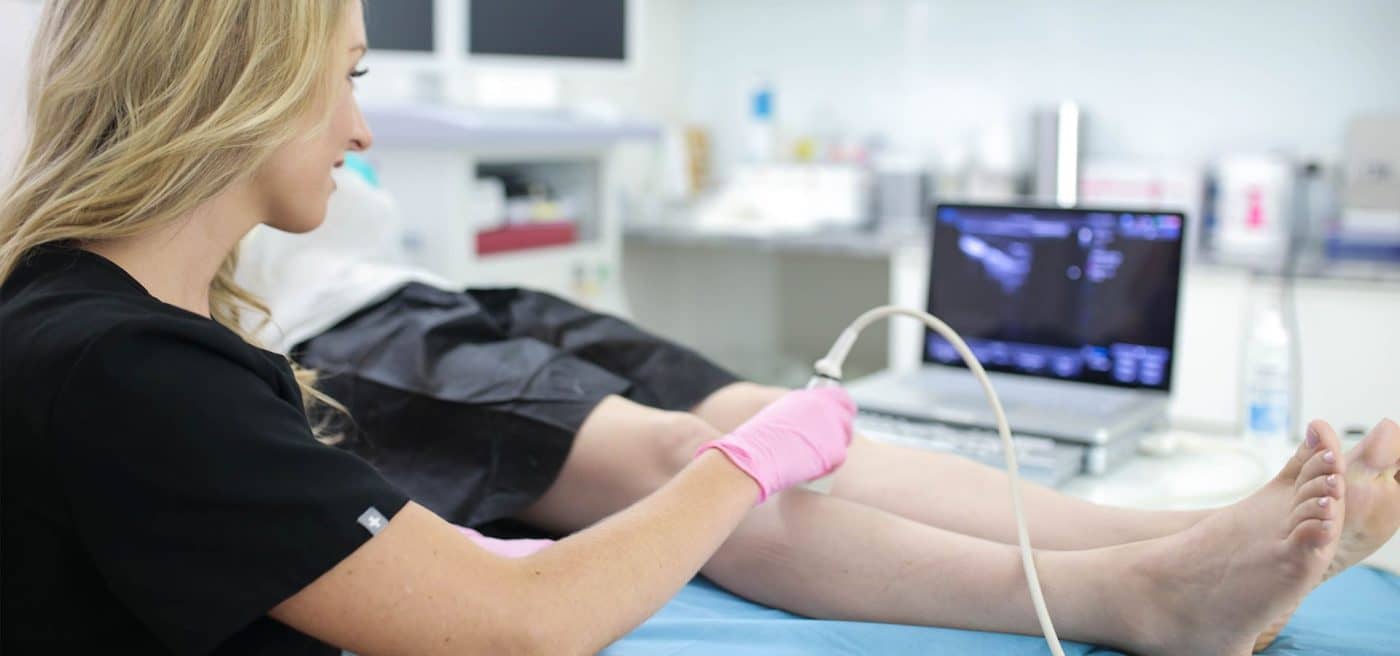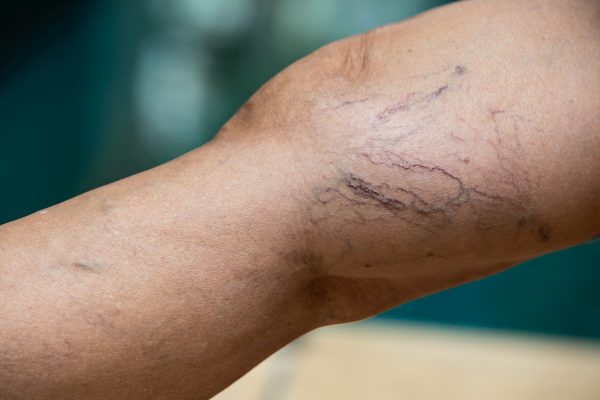Our varicose vein clinic answers some of the most frequently asked questions about varicose vein treatment.
Vein Treatment Clinic is one of the most reputable vein clinics of America. Our state-of-the-art vein centers are led by some of the country’s finest board-certified and Ivy League-educated vein doctors. We eschew traditional, unpredictable, and ineffective varicose vein surgery treatments in favor of the latest cutting-edge minimally invasive varicose vein treatments, including radiofrequency ablation, endovenous laser ablation, sclerotherapy. Our vein doctors accurately diagnose the root cause of your vein problems using the latest diagnostic technologies, allowing them to recommend the ideal varicose vein treatment plans for your specific needs and concerns.

We also believe that patients must have access to accurate and medically-sound information about vein disease, spider veins, and vein treatments. Unfortunately, we’ve noticed that the online space is full of misleading or inaccurate information on vein-related subjects. Online sources often peddle false information on spider veins to recommend fake spider vein ointments and remedies without any scientific backing. Some online sources also state that spider veins aren’t dangerous at all, discouraging patients from consulting vein doctors. This article aims to provide accurate and medically-sound information on vein care, vein conditions, and the minimally invasive treatment of varicose veins and spider veins.

Q1. Why do you need treatment for varicose veins and spider veins?
Varicose veins and spider veins aren’t superficial cosmetic problems but rather symptomatic of a dangerous circulatory disorder called chronic venous insufficiency. Healthy veins consist of vein valves, components that act like one-way doors to ensure smooth one-way blood circulation to the heart. Chronic venous insufficiency is a medical condition wherein your vein valves collapse, causing blood to flow backward due to the gravitational force, eventually accumulating in your leg veins. The continued accumulation of blood in your leg veins leads to varicose veins, spider veins, and other vein problems. Varicose vein treatments are essential because venous insufficiency is a chronic condition that worsens with time. If left untreated, it may eventually lead to skin disease, skin discoloration, burst varicose veins, profuse bleeding, leg ulcers, and deep vein thrombosis.
Q2. What are the benefits of minimally invasive varicose vein treatments?
In the past, varicose veins could only be treated via varicose vein surgery, i.e., procedures requiring hospitalization and extended downtime. Varicose vein surgery also involves significant risk of complications, like infections and deep vein thrombosis. However, thanks to advanced technologies and minimally invasive solutions, varicose vein surgery is now obsolete. Minimally invasive varicose vein treatments are even more effective than varicose vein surgery. They cause minimal pain and discomfort and involve a negligible risk of complications, and they conclude within an hour with no downtime. Minimally invasive varicose vein treatments are also eligible for insurance coverage.
Q3. What are the steps involved in the diagnosis and treatment of vein conditions?
The diagnosis and treatment of vein conditions is a straightforward 5-step process:
- The vein doctors diagnose the root cause of your vein conditions by examining your leg veins, reviewing your medical history, and administering vascular imaging tests. Vascular imaging allows them to visualize blood flow in your leg veins, identifying venous insufficiency.
- After diagnosing the root cause of your vein problems, the vein doctors discuss all your minimally invasive vein treatment options. They discuss the pros, cons, and eligible for insurance coverage, allowing you to make an informed choice.
- If you have underlying vein disease, the vein doctor recommends minimally invasive varicose vein treatments, including radiofrequency ablation, endovenous laser ablation, and VenaSeal.
- After the primary varicose vein treatment, the vein doctors recommend minimally invasive cosmetic treatments, including sclerotherapy or ambulatory phlebectomy.
- Minimally invasive varicose vein treatments conclude within an hour with no downtime. After the procedure, the vein doctor will discuss all your post-treatment recovery guidelines, advising you to wear compression stockings for a few days or weeks. You can leave the vein center and resume most of your daily activities immediately.
Q4. What happens during minimally invasive varicose veins treatment?
During minimally invasive varicose vein treatments, the vein doctors use various methods to seal or collapse the diseased saphenous vein responsible for your vein conditions. During radiofrequency ablation, the vein doctor channels thermal energy through a catheter. During endovenous laser aviation, the vein doctor channels laser energy through an endovenous laser. During VenaSeal, the vein doctor injects a medical adhesive into the diseased vein. Different varicose vein treatments use different techniques, but they have the same underlying goal — seal/close/destroy the diseased vein to restore smooth blood circulation to the heart.
Q5. Do varicose vein treatments receive insurance coverage?
Varicose vein treatments are only eligible for insurance coverage if they’re deemed medically necessary, i.e., if you have underlying chronic venous insufficiency. Radiofrequency ablation and endovenous laser ablation are covered by most insurance plans because they’re medically necessary procedures. VenaSeal also treats vein disease, but it’s a relatively new procedure without insurance coverage as of now. Sclerotherapy isn’t eligible for insurance coverage because it’s a cosmetic treatment that removes the visible spider veins without addressing the underlying vein disease. But our vein doctors may include sclerotherapy in your primary varicose vein treatment, unofficially bringing it under your insurance coverage. Please discuss this option with your vein doctors.
Find a varicose vein clinic near your location.
Vein Treatment Clinic has vein centers and vein doctors across the United States. As of now, we have vein centers in New York City, Long Island, New Jersey (Paramus and Clifton), San Diego, and Houston. For more information, please schedule a consultation at your nearest varicose vein treatment center.
To learn more about our accredited vein centers, please visit www.veintreatmentclinic.com. Our spider and varicose vein treatment clinics are certified by the IAC as vascular imaging centers and vein treatment centers of excellence. We have local affiliates in New York, Long Island, New Jersey, Texas and California, all of which are held to the highest standards of patient-centered, compassionate, care. We offer the latest technology at every location, and our harvard-trained medical directors lead a collaborative effort to ensure the best outcome for every patient we meet.









